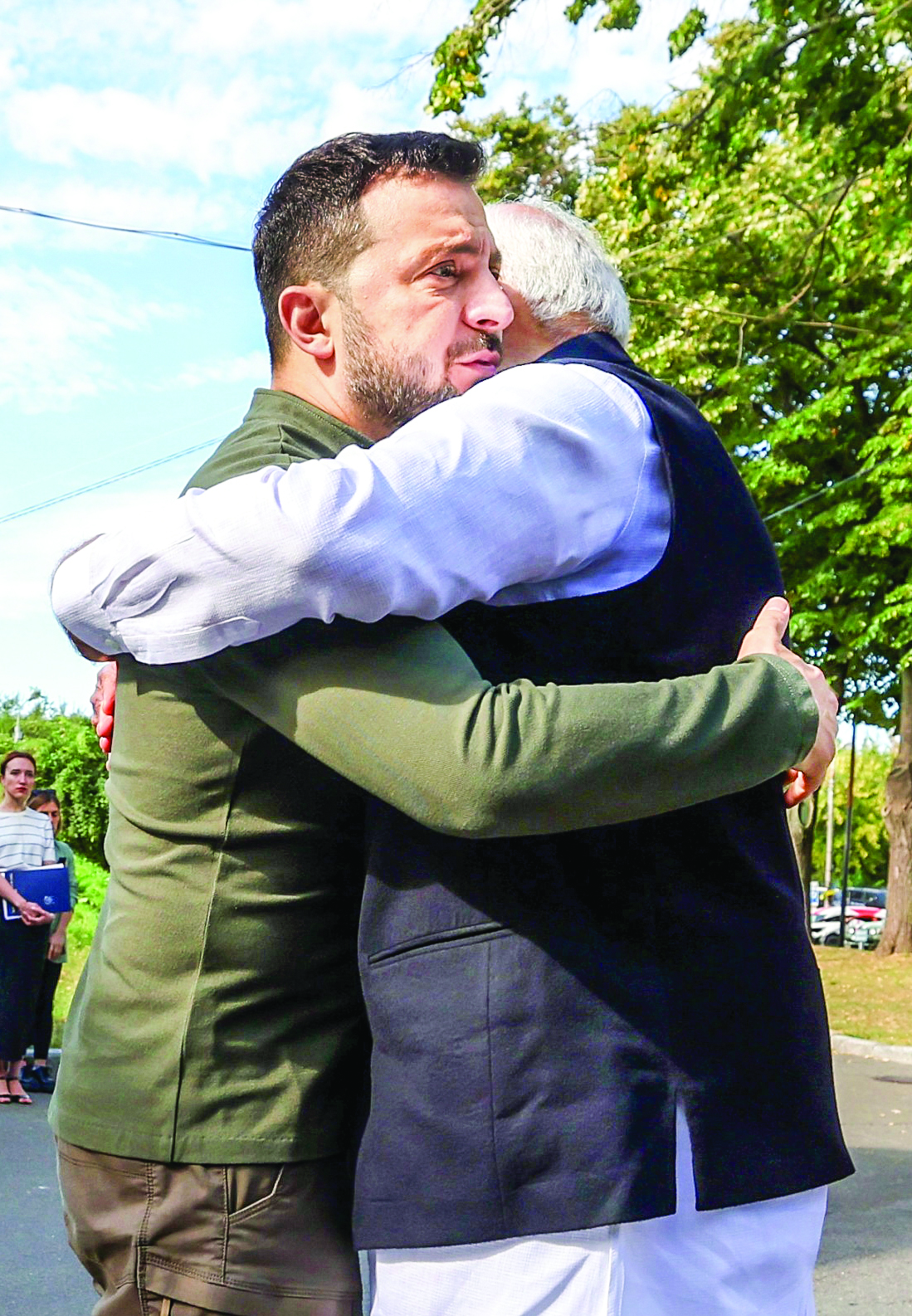Embraces are as old as time and twice as charming
“In our part of the world, when people meet, they tend to embrace each other. It may not be part of your culture, but I assure you, it is part of ours. In fact, today I saw Prime Minister Modi embrace President Zelenskyy, and I’ve seen him do it with a number of other leaders in various places. So, I think there is a slight cultural gap in terms of what these courtesies mean,” said External Affairs Minister S. Jaishankar, his words laced with the subtle irritation of someone who has grown weary of explaining the obvious.
Jaishankar’s statement, delivered with his usual diplomatic finesse, offers a succinct summary of the debate surrounding Prime Minister Narendra Modi hugging world leaders. What may appear to some as an overly familiar or even awkward gesture is, in reality, a profound expression of India’s cultural heritage—a practice deeply rooted in traditions that stretch back thousands of years. The Prime Minister’s embraces are not just spontaneous displays of affection; they are intentional acts steeped in the ancient customs of “aalingan”, where a hug symbolizes trust, respect, and a connection that goes beyond mere words.
In India, the act of hugging or aalingan is more than just a greeting; it’s a cultural tradition with deep emotional and spiritual significance. From the epic tales of the “Ramayana” and “Mahabharata” to everyday interactions, the embrace is a symbol of unity, compassion, and a bond that transcends the physical.
Take, for instance, the “Ramayana,” where the embrace between Lord Rama and Hanuman is a moment of profound emotion, symbolizing the loyalty and devotion that Hanuman has shown to his lord. It’s not just a hug; it’s a moment of shared understanding, a physical manifestation of the deep connection between them. Similarly, in the “Mahabharata,” when Krishna embraces his friends and devotees, it’s an act of divine love, a reminder that true friendship and devotion are beyond worldly ties.
Prime Minister Modi’s hugs draw from this rich cultural context. Every time he wraps his arms around a world leader, it’s not just about breaking the ice—it’s about building bridges, creating connections that go beyond the formalities of statecraft.
The act of embracing is far from unique to India. The gesture of a hug is universal, recognized across cultures and throughout history as a symbol of goodwill, trust, and mutual respect.
In ancient Greece, the term “aspasmós” referred to a greeting that often included an embrace, reflecting the warmth and respect between individuals. The Greeks, with their emphasis on personal relationships and philosophical discourse, understood that an embrace could convey what words could not.
Similarly, in Latin, “amplexus” (embrace) and “complexus” (entwining) were terms that highlighted the importance of close, personal connections. The Romans, known for their formality and structure, recognized the value of an embrace in both personal and diplomatic contexts, seeing it as a gesture that could convey sincerity and build trust.
PM Modi’s embrace, therefore, resonates on a global scale, tapping into a shared human experience that transcends cultural boundaries. It’s a gesture that, while rooted in Indian tradition, speaks a language understood by all.
To dismiss the hug would be to underestimate their strategic significance. In the often chilly and impersonal world of international diplomacy, where interactions are guided by protocol and caution, a warm embrace can be a powerful disruptor. It humanizes the interaction, breaks down barriers, and creates a sense of closeness that few other gestures can achieve.
When PM Modi hugs a world leader, he’s sending a message: India values personal connections, and relationships are built on more than just agreements and treaties. This approach aligns with India’s broader diplomatic strategy, which emphasizes soft power and cultural diplomacy as key tools in its international relations.
The embrace is more than just a gesture; it’s a bridge between ancient cultural practices and modern diplomatic strategies. In a world that often seems divided and polarized, his hugs serve as a reminder of our shared humanity. They are acts of goodwill that transcend the transactional nature of diplomacy, creating connections that are both personal and enduring.
In a world where divisions seem to grow by the day, a hug might just be the simplest, yet most profound way to bring us all a little closer together. And in that sense, PM Modi’s hugs are not just a diplomatic tool—they are a timeless reminder of the power of human connection. After all, “Hugging is a silent way of saying you matter to me,” and “The best thing about hugs is that you can’t give one without getting one.”
Anurag Punetha is a broadcast media professional, and media head, IGNCA.

